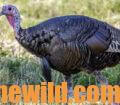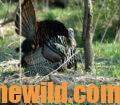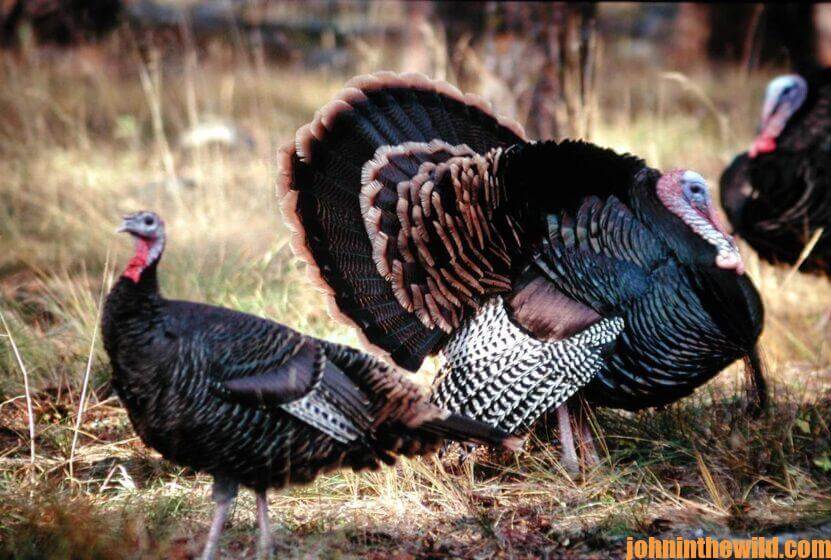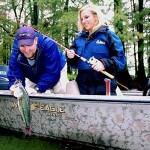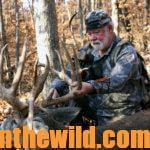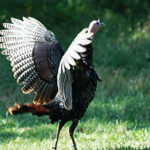Editor’s Note: Three secrets will help you to consistently take turkeys – location, location, location. Probably hunters bag 90 percent of their turkeys by sitting in places turkeys want to walk to anyway. Now before turkey season starts is the time to scout and identify where turkeys are. The big mistake many turkey hunters make when scouting is using hen calls to make turkeys gobble. To solve this problems, don’t take any calls with you when you’re scouting except locator calls like those of crows, owls, pileated woodpeckers and hawks and a coyote howler.
 Eddie Salter of Evergreen, Alabama, has won the World Turkey Calling Championship twice and is widely known as a top turkey hunter. Salter says, “If you’re going to crawl on your hands and knees for gobblers, make sure you know the property, and that no one else is hunting that property but you. Often when I’ve used everything I can think of to call a turkey to me, if I can move 10 – 15 yards away from where I’ve started calling, I can get in a better position to get-off a shot. Too, the gobbler may think his hen is leaving him, and he’ll come to within gun range. I always make sure there’s a bush or a tree between me and the bird. Then the tom can’t see me when I move.
Eddie Salter of Evergreen, Alabama, has won the World Turkey Calling Championship twice and is widely known as a top turkey hunter. Salter says, “If you’re going to crawl on your hands and knees for gobblers, make sure you know the property, and that no one else is hunting that property but you. Often when I’ve used everything I can think of to call a turkey to me, if I can move 10 – 15 yards away from where I’ve started calling, I can get in a better position to get-off a shot. Too, the gobbler may think his hen is leaving him, and he’ll come to within gun range. I always make sure there’s a bush or a tree between me and the bird. Then the tom can’t see me when I move.
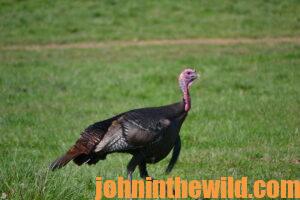 “Too, I like to have a terrain break between me and the gobbler, especially when I’ve got my belly to the ground. Even if I get wet, I’ll move down a ditch or a creek bottom – whatever I must do – so that I’m below the turkey’s line of sight. Terrain dictates how, when and where to move. Often crawling on hands and knees or on your stomach is the difference in having a turkey ride home in the back of your truck and not getting your bird.”
“Too, I like to have a terrain break between me and the gobbler, especially when I’ve got my belly to the ground. Even if I get wet, I’ll move down a ditch or a creek bottom – whatever I must do – so that I’m below the turkey’s line of sight. Terrain dictates how, when and where to move. Often crawling on hands and knees or on your stomach is the difference in having a turkey ride home in the back of your truck and not getting your bird.”
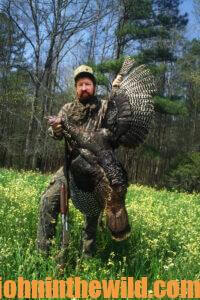 David Hale, the co-founder of Knight & Hale Game Calls in Cadiz, Kentucky, and a master hunter, has called turkeys for many years. “I believe getting yourself into position to take a gobbler requires more talent on the hunter’s part than just calling the bird to you does,” Hale explains. “A turkey has a variety of reasons for answering calls without coming to them, including an obstacle he doesn’t want to cross, an open place he’s in where he expects to see a hen and doesn’t and/or an area where he remembers a hunter has shot at him before or a coyote or another predator has attacked him there earlier. To take that turkey, you’ll have to move to another calling position, as low to the ground as possible, and without making much noise. And, the quietest way to move may be on your hands and knees or stomach.
David Hale, the co-founder of Knight & Hale Game Calls in Cadiz, Kentucky, and a master hunter, has called turkeys for many years. “I believe getting yourself into position to take a gobbler requires more talent on the hunter’s part than just calling the bird to you does,” Hale explains. “A turkey has a variety of reasons for answering calls without coming to them, including an obstacle he doesn’t want to cross, an open place he’s in where he expects to see a hen and doesn’t and/or an area where he remembers a hunter has shot at him before or a coyote or another predator has attacked him there earlier. To take that turkey, you’ll have to move to another calling position, as low to the ground as possible, and without making much noise. And, the quietest way to move may be on your hands and knees or stomach.
“I believe that to move on a turkey, you must be able to see 75 to 80 yards in every direction. The best time to move on a gobbler is when he’s leaving one region and going to another, or when he’s strutting back and forth and won’t leave the place where he is. If you’ll stay low, even if a turkey sees you, he’ll think that you don’t represent danger because you’re below his line of sight. If the turkey spots you crawling, he’ll see movement, often mistake you for a hen and come toward you popping and clucking. I’ve taken many turkeys in the past by shaking my hat or making some other kind of movement below the turkey’s line of vision to get his attention and get him moving toward me to see what I am. I’m convinced that the edges of fields or flat open woods are the easiest and safest places to move on gobblers, and rolling hills and mountainous country on public lands are the most dangerous.”
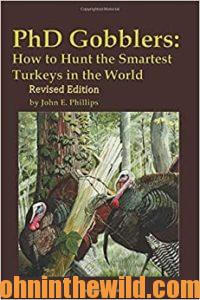 To learn more about hunting turkeys successfully, visit John E. Phillips’ Amazon book page at https://www.amazon.com/John-E.-Phillips/e/B001HP7K6O. For even more information from many of the top turkey hunters and callers, go to the book, “PhD Gobblers: How to Hunt the Smartest Turkeys in the World” at https://www.amazon.com/gp/product/B083V83RLG/ref=dbs_a_def_rwt_hsch_vapi_taft_p4_i11
To learn more about hunting turkeys successfully, visit John E. Phillips’ Amazon book page at https://www.amazon.com/John-E.-Phillips/e/B001HP7K6O. For even more information from many of the top turkey hunters and callers, go to the book, “PhD Gobblers: How to Hunt the Smartest Turkeys in the World” at https://www.amazon.com/gp/product/B083V83RLG/ref=dbs_a_def_rwt_hsch_vapi_taft_p4_i11
and available in Kindle, print and Audible. You may have to copy and paste this link into your browser. (When you click on the book, notice on the left where Amazon says you can read and hear 10% of the book for free). On the right side of the page and below the offer for a free Audible trial, you can click on Buy the Audible book.
Tomorrow: Relocate to Take More Turkeys

